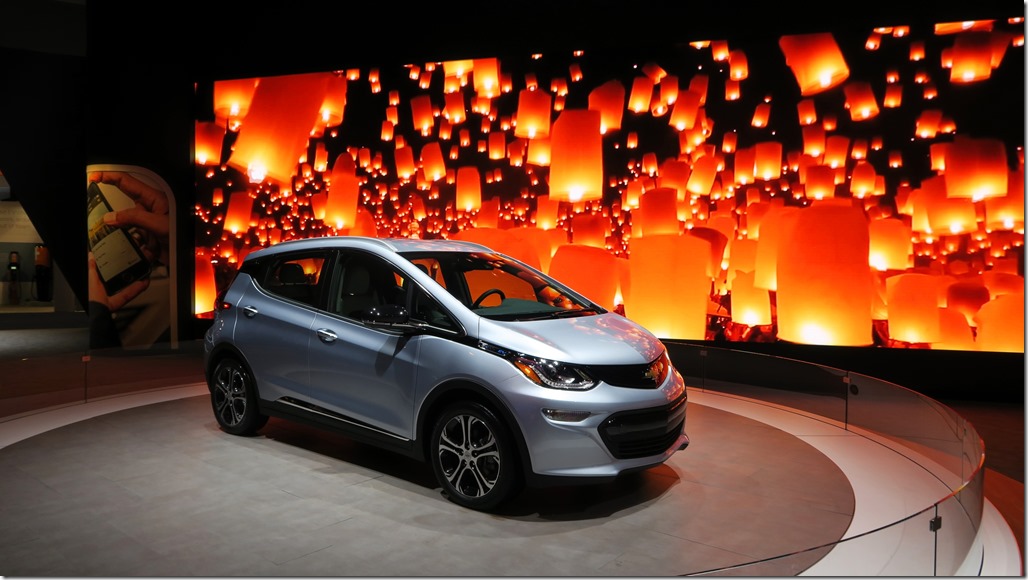- Photo Safaris
- Alaska Bears & Puffins World's best Alaskan Coastal Brown Bear photo experience. Small group size, idyllic location, deluxe lodging, and Puffins!
- Participant Guestbook & Testimonials Candid Feedback from our participants over the years from our photo safaris, tours and workshops. We don't think there is any better way to evaluate a possible trip or workshop than to find out what others thought.
- Custom Photo Tours, Safaris and Personal Instruction Over the years we've found that many of our clients & friends want to participate in one of our trips but the dates we've scheduled just don't work for them or they'd like a customized trip for their family or friends.
- Myanmar (Burma) Photo Tour Myanmar (Burma) Photo Tour December 2017 -- with Angkor Wat option
- Reviews Go hands-on
- Camera Reviews Hands-on with our favorite cameras
- Lens reviews Lenses tested
- Photo Accessories Reviews Reviews of useful Photo and Camera Accessories of interest to our readers
- Useful Tools & Gadgets Handy tools and gadgets we've found useful or essential in our work and want to share with you.
- What's In My Camera Bag The gear David Cardinal shoots with in the field and recommends, including bags and tools, and why
- Articles About photography
- Getting Started Some photography basics
- Travel photography lesson 1: Learning your camera Top skills you should learn before heading off on a trip
- Choosing a Colorspace Picking the right colorspace is essential for a proper workflow. We walk you through your options.
- Understanding Dynamic Range Understanding Dynamic Range
- Landscape Photography Tips from Yosemite Landscape Photography, It's All About Contrast
- Introduction to Shooting Raw Introduction to Raw Files and Raw Conversion by Dave Ryan
- Using Curves by Mike Russell Using Curves
- Copyright Registration Made Easy Copyright Registration Made Easy
- Guide to Image Resizing A Photographers' Guide to Image Resizing
- CCD Cleaning by Moose Peterson CCD Cleaning by Moose Peterson
- Profiling Your Printer Profiling Your Printer
- White Balance by Moose Peterson White Balance -- Are You RGB Savvy by Moose Peterson
- Photo Tips and Techniques Quick tips and pro tricks and techniques to rapidly improve your photography
- News Photo industry and related news and reviews from around the Internet, including from dpreview and CNET
- Getting Started Some photography basics
- Resources On the web
- My Camera Bag--What I Shoot With and Why The photo gear, travel equipment, clothing, bags and accessories that I shoot with and use and why.
- Datacolor Experts Blog Color gurus, including our own David Cardinal
- Amazon Affiliate Purchases made through this link help support our site and cost you absolutely nothing. Give it a try!
- Forums User to user
- Think Tank Photo Bags Intelligently designed photo bags that I love & rely on!
- Rent Lenses & Cameras Borrowlenses does a great job of providing timely services at a great price.
- Travel Insurance With the high cost of trips and possibility of medical issues abroad trip insurance is a must for peace of mind for overseas trips in particular.
- Moose Peterson's Site There isn't much that Moose doesn't know about nature and wildlife photography. You can't learn from anyone better.
- Journeys Unforgettable Africa Journeys Unforgettable -- Awesome African safari organizers. Let them know we sent you!
- Agoda International discounted hotel booking through Agoda
- Cardinal Photo Products on Zazzle A fun selection of great gift products made from a few of our favorite images.
- David Tobie's Gallery Innovative & creative art from the guy who knows more about color than nearly anyone else
- Galleries Our favorite images
Canon G5 X field-tested: Is it the best point and shoot ever?
Canon G5 X field-tested: Is it the best point and shoot ever?
Submitted by David Cardinal on Wed, 01/20/2016 - 08:13
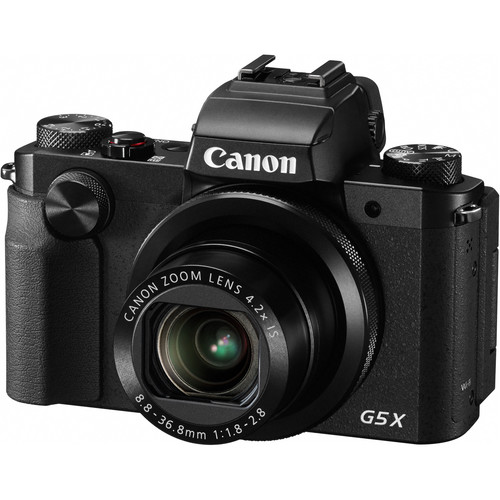 Up until now, the choice for best point and shoot was tricky – none of the three leading cameras had everything. The Canon G7 X got top marks for image quality and has a good zoom range, but no viewfinder. The Sony RX100 IV sort-of-has a viewfinder (it is a small pop-up), but has a limited zoom range and is a little lower-scoring on image quality. The somewhat older Lumix LX100 is also a worthy competitor, but its larger size isn’t justified by image quality or features. Canon has finally broken the logjam with its new Canon G5 X. This new model adds an excellent Electronic ViewFinder (EVF) and a hot shoe for an add-on flash. There are also some other, smaller, updates to video recording formats and other features, but the EVF and hot shoe are clearly the headline here.
Up until now, the choice for best point and shoot was tricky – none of the three leading cameras had everything. The Canon G7 X got top marks for image quality and has a good zoom range, but no viewfinder. The Sony RX100 IV sort-of-has a viewfinder (it is a small pop-up), but has a limited zoom range and is a little lower-scoring on image quality. The somewhat older Lumix LX100 is also a worthy competitor, but its larger size isn’t justified by image quality or features. Canon has finally broken the logjam with its new Canon G5 X. This new model adds an excellent Electronic ViewFinder (EVF) and a hot shoe for an add-on flash. There are also some other, smaller, updates to video recording formats and other features, but the EVF and hot shoe are clearly the headline here.
Enter the Canon PowerShot G5 X
The result is that the Canon G5 X is the first point and shoot I felt I could try to use instead of a larger camera rig to do “real” photography. In fact, I used it exclusively (aside from some photos I took with my smartphones as part of an article on that topic) for the week I spent covering CES. At about 13 ounces (plus a few more for the handy little Canon 270EX II Speedlite), it weighed only a fraction of my usual DSLR plus lenses. That said, it is bigger and heavier than its predecessor and its competitors. Almost 3 ounces heavier than the Canon G7 X, it is also a little larger. It still fit in the cargo pocket of my pants, but just barely. For me, that tradeoff is completely worth it, as without a serious flash and a viewfinder, it is hard to replace a DSLR or mirrorless with a point and shoot as a primary camera.
Image Quality
Like all of its competitors, the Canon G5 X uses a “1-inch format” sensor. Basically, it’s the largest size that fits in a point-and-shoot form factor, but still smaller than the sensor in a micro-four-thirds or the APS-C sensor in a Sony mirrorless. In fact, Sony, Canon, and Panasonic all use very similar (if not identical) Sony sensors. So image quality is a matter of the lens and the camera firmware, at least for JPEGs. For Raw files, much of the firmware processing is moot, as it is replaced by software on your computer. In short, that means all of these model are very close when it comes to image quality, rating between 67 and 71 in terms of overall DxOMark scores (the Canon G5 X hasn’t been tested yet, but I expect it to be very close to the 71 points scored by the Canon G7 X – maybe a point or two higher).
There was a surprising amount of light on this show car, so I could shoot at ISO 125, but it still wasn’t simple for the camera to capture the range of color.
Canon G5 X, 1/60s @ f/5.6, ISO 125
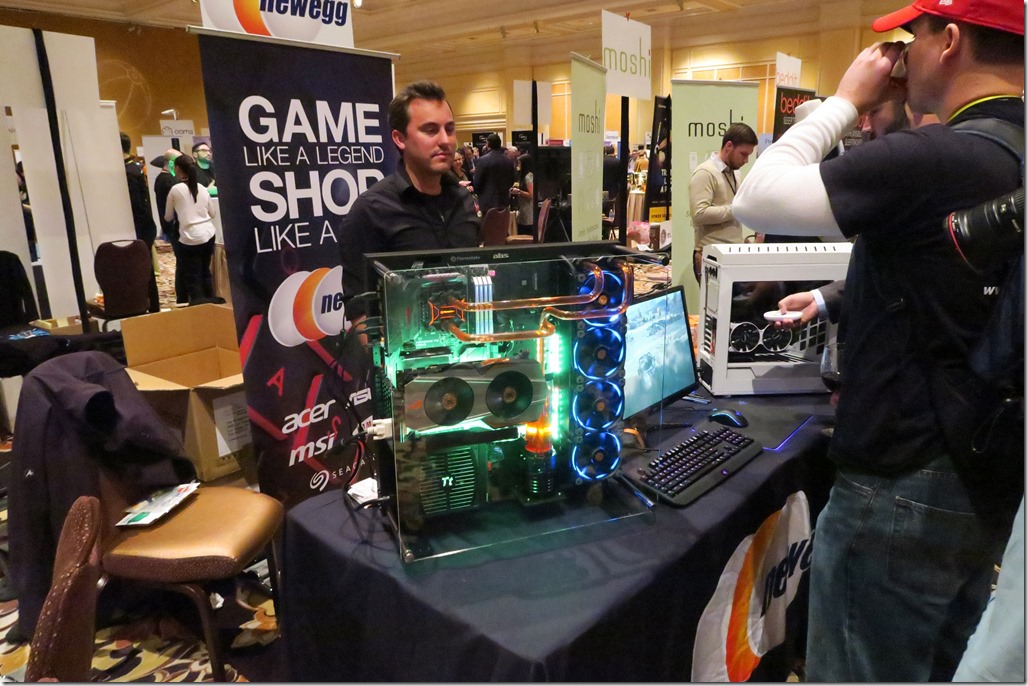
It is hard to believe that this image was shot in tricky lighting, indoors, without flash, at ISO 6400, with a point and shoot – but it was!
Canon G5 X, 1/202s @ f/4.5, ISO 6400
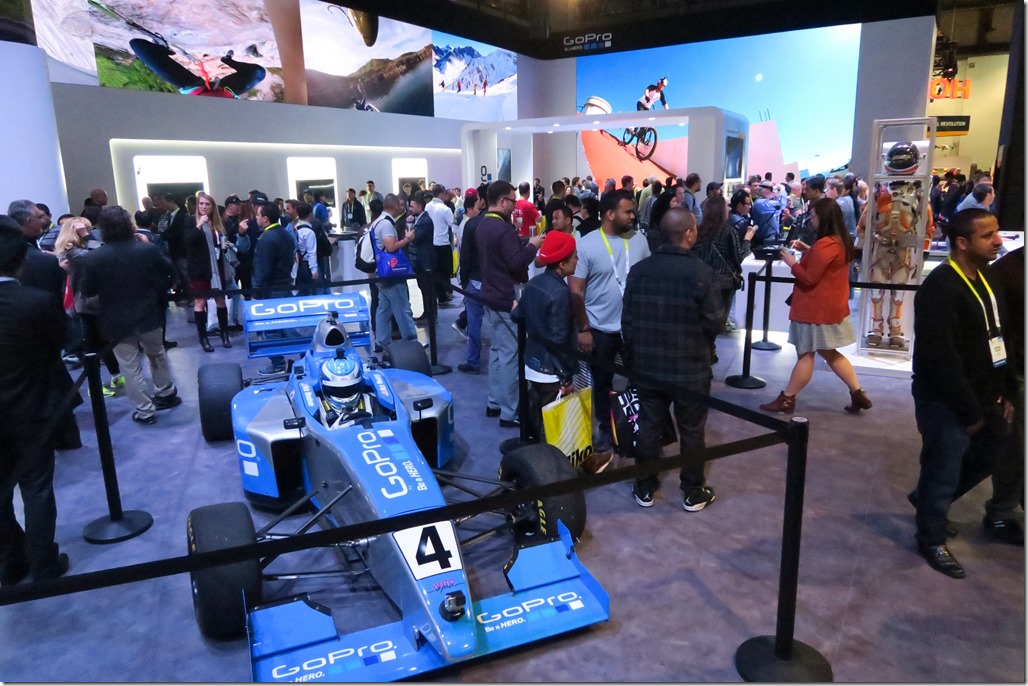
I wanted to make sure and freeze the action in the GoPro booth, so I bumped up my shutter speed (and therefore my ISO)
Canon G5 X, 1/1002s @ f/2.8, ISO 6400
Overall, I have been very pleased by the images coming out of the G5 X, both the in-camera JPEGs, and the ones I’ve shot Raw and post-processed with Adobe’s software (I’m still waiting for an Optics Pro module for the G5 X, as I’d love to try their PRIME noise reduction on the high-ISO shots). I used the camera to illustrate the 11 articles I wrote from CES, including the images in my CES wrap-up. There were times I certainly would have liked to have a longer telephoto, or a wider-wide-angle, and of course my Nikon D810 would have allowed me to push ISOs higher for faster shutter speeds or greater depth of field in a few situations, but for online publication, the images were completely acceptable. Clearly I wouldn’t want to do much large-scale printing of the high ISO versions, but that’s to be expected.
Autofocus, performance, ergonomics and user experience
 The G5 X felt very responsive. Recent advances in CMOS sensor technology have allowed non-DSLR cameras to implement phase-detect Autofocus (once the secret sauce of DSLRs) and the difference in focus speed is dramatic. There still isn’t the same sort of precision control you get with dozens of selectable AF points and a thumb joystick on a DSLR, but at least the camera gets to whatever it decides to focus on very quickly. Similarly, the shutter lag was amazingly small for a point and shoot. When pre-focused it measures as low as 22 milliseconds (.022 seconds). Even with Autofocus, benchmarks place it around 1/4 second. In burst mode, the camera can capture up to 7 or 8 JPEGs per second. Unfortunately, Raw mode takes the rate to under one frame per second.
The G5 X felt very responsive. Recent advances in CMOS sensor technology have allowed non-DSLR cameras to implement phase-detect Autofocus (once the secret sauce of DSLRs) and the difference in focus speed is dramatic. There still isn’t the same sort of precision control you get with dozens of selectable AF points and a thumb joystick on a DSLR, but at least the camera gets to whatever it decides to focus on very quickly. Similarly, the shutter lag was amazingly small for a point and shoot. When pre-focused it measures as low as 22 milliseconds (.022 seconds). Even with Autofocus, benchmarks place it around 1/4 second. In burst mode, the camera can capture up to 7 or 8 JPEGs per second. Unfortunately, Raw mode takes the rate to under one frame per second.
By moving the pop-up flash to the center of the camera (behind the EVF) Canon has made room to split the control dials on the camera into two separate ones on the right and left (instead of two concentric ones). In general, this is great, as it provides an easy to use Exposure Compensation dial right near the shutter button. The only problem is that the dial is too easy to move inadvertently, when putting the camera into your pocket or camera bag, for example. Several times I found myself starting to take wildly over-exposed or under-exposed images as a result. Fortunately the LCD & EVF both show the image after compensation, so usually you’ll notice something is wrong fairly quickly. Other than that glitch, the dials on the camera and a front ring around the lens provide a flexible and powerful interface.
Serious shooters are definitely going to want to take the time to customize the controls. The camera features a good variety of programmable control dials (ring around the lens, small dial near the shutter, and the little ridged ring on the back), but by default they are set to do nothing in many of the advanced shooting modes. In particular, you’ll want to put ISO on one of them (I use the back ring), or needing to fire up the menu system to change ISO may drive you crazy.
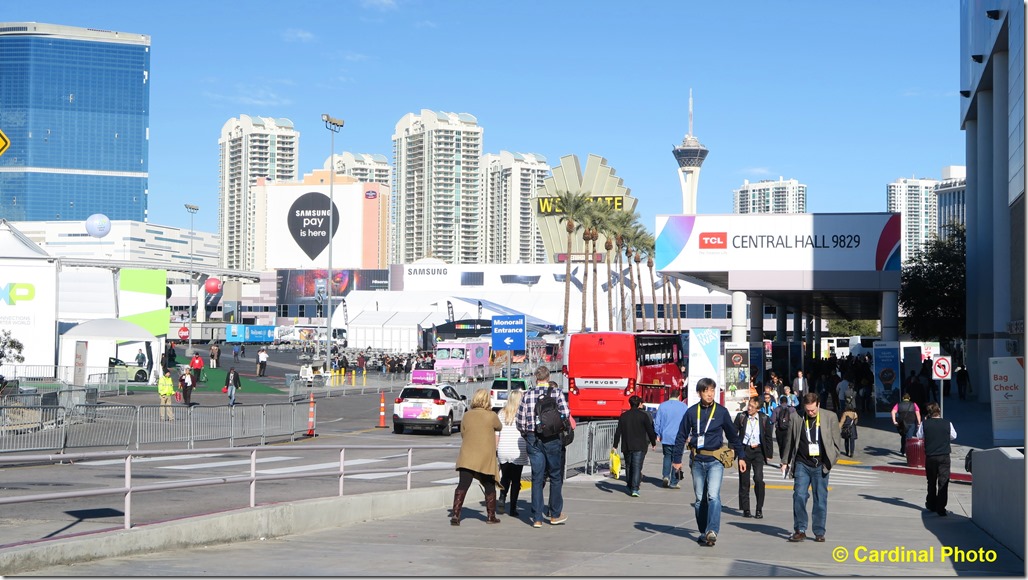
The 21MP sensor in the Canon G5 X has plenty of resolution for capturing detail in outdoor scenes.
Is the Canon G5 X right for you?
If you’re looking for a small, pocket camera to use as a convenience when you don’t want to deal with your DSLR, then I’d still recommend the tiny Canon PowerShot S120. It is about the size of a cigarette pack, inexpensive, shoots Raw, and takes good quality images. Conversely if you are looking to replace your DSLR and lenses with a lighter alternative, there are lots of great mirrorless options, including the excellent Sony a6000. But if you want to go further, and replace your rig with a single point-and-shoot, or upgrade your aging point-and-shoot to the latest and greatest, you can’t beat the Canon G5 X for features and image quality. At $750, it is also in the same price range as its competitors. Just be prepared for its bulky (for a point-and-shoot) size. If you’re concerned about the larger size, the good news is that Canon has dropped the price on its predecessor, so you can now get the Canon G7 X for $600 from B&H.
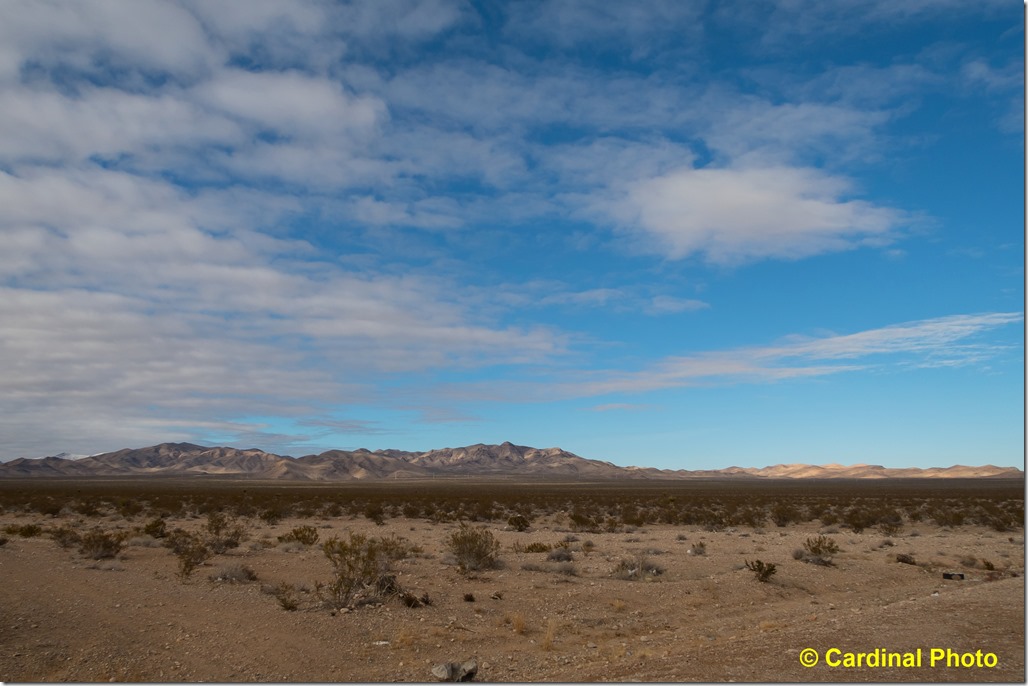
In many ways, the desert outside Las Vegas is more interesting to me than the city itself.
While I did use my DSLRs for most of my landscape shooting on my drive there and back, I took some quick shots like this one with the Canon G5 X.
Looking for great values on photo equipment?
|
Read our field tests of the competition
If you’d like to catch up on our experiences with some alternatives to the Canon G5 X, we’ve reviewed and field tested several of them:
- Canon G7 X field test- Finally, a worthy competitor to the Sony RX100 III
- Lumix LX100 Field-tested- The Leica you always wanted, for a fraction of the price
- Sony RX100 III Field-tested- Is it still the best overall point and shoot on the market
- Sony RX100 IV Field-tested
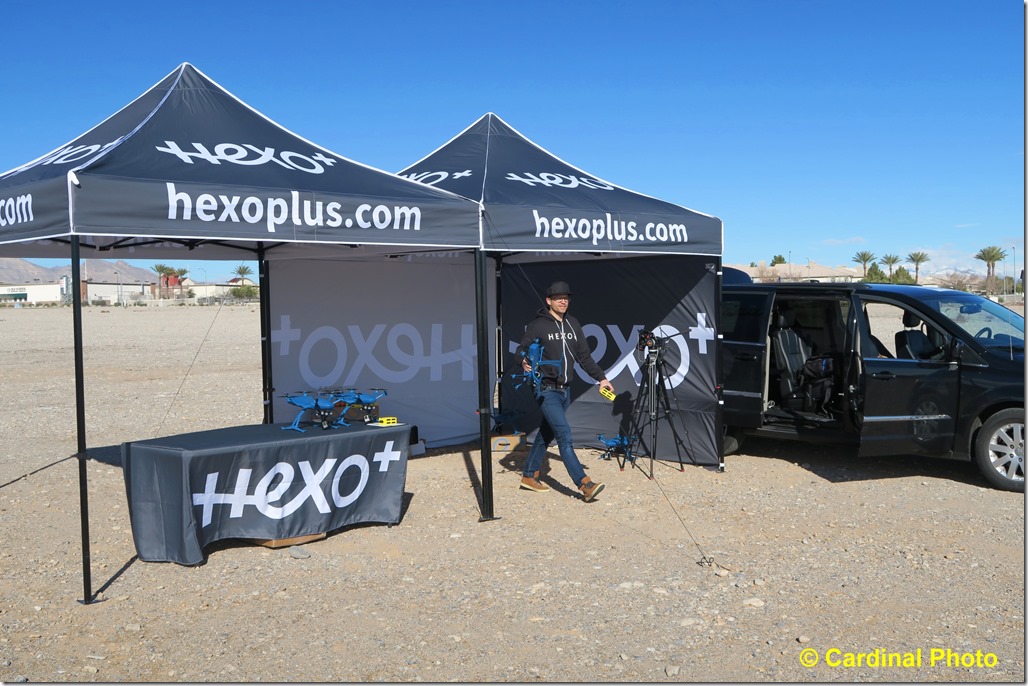
Like many cameras with smallish sensors, Depth of FIeld is fairly easy to achieve with the Canon G5 X
1/1244s @ f/5, ISO 125
Full Specs of the Canon G5 X
Pixels
Actual: 20.9 Megapixel
Effective: 20.2 Megapixel
Sensor
1" CMOS
Bit Depth
14-bit
File Formats
Still Images: JPEG, RAW
Movies: MP4, MPEG-4 AVC/H.264
Audio: AAC LC
Max Resolution
20.2 MP: 5472 x 3648
Aspect Ratio
1:1, 3:2, 4:3, 16:9
Image Stabilization
Optical
Lens
EFL: 8.8-36.8mm (35 mm equivalent: 24-100mm)
Aperture: f/1.8 (W) - 2.8 (T)
Zoom
Optical: 4.2x
Digital: 4x
Focus Range
Wide: 2" (5.08 cm) - Infinity
Telephoto: 1.3' (39.62 cm) - Infinity
Macro: 2" (5.08 cm) - 1.6' (48.77 cm)
ISO Sensitivity
Auto, 125-6400 (Extended Mode: 125-12800)
Shutter
30 - 1/2000 second, Bulb Mode
1 - 1/2000 second in Auto Mode
1/8 - 1/2000 second in Movie Mode
Exposure Metering
Center-weighted, Evaluative, Spot
Exposure Modes
Modes: Aperture Priority, Auto, Creative Filters, Creative Shot, Custom, Hybrid Auto, Manual, Movie, Program, SCN, Shutter Priority
Compensation: -3 EV to +3 EV (in 1/3 EV steps)
Shooting Modes
Background Defocus
Fireworks
Fish-Eye Effect
HDR
Handheld Night Scene
Miniature Effect
Monochrome
Movie
Nostalgic
Portrait
Poster Effect
Self-Portrait
Soft Focus
Sports
Star Nightscape
Star Portrait
Star Time-Lapse Movie
Star Trails
Super Vivid
Toy Camera Effect
White Balance Modes
Auto, Cloudy, Custom 1, Custom 2, Daylight, Flash, Fluorescent, Fluorescent H, Shade, Tungsten
Continuous Shooting
Up to 5.9 fps at 20.2 MP frames
Up to 4.4 fps at 20.2 MP frames
Self Timer
10 Sec, 2 Sec
Interval Recording
Yes
Remote Control
RS-60E3 (Optional)
Flash Modes
Auto
Forced On
Off
Slow Sync
Built-in Flash
Yes
Maximum Effective Flash Range
Wide: 1.64 - 22.97' (0.5 - 7 m)
Telephoto: 1.64 - 13.12' (0.5 - 4 m)
External Flash Connection
Hot Shoe
Memory Card Type
SD
SDHC
SDXC
Video Recording
Yes, NTSC/PAL
Resolution
1920 x 1080p: 59.94 fps, 29.97 fps, 23.98 fps, 14.985 fps
1280 x 720p: 29.97 fps, 6 fps, 3 fps, 1.5 fps
640 x 480p: 29.97 fps, 6 fps, 3 fps, 1.5 fps
Video Clip Length
Up to 4 GB or 29 Min 59 Sec
Audio Recording
Built-in Mic: With Video, Stereo
Viewfinder Type
Electronic
Viewfinder Coverage
100%
Screen
3.0" LCD Rear Touch Screen Swivel (1,040,000 pixels)
Screen Coverage
100%
Connectivity/System Requirements
Connectivity
HDMI D (Micro), Micro-USB, USB 2.0
Wi-Fi
Yes, 802.11b/g/n built-in
Operating/Storage Temperature
Operating
32 to 104°F (0 to 40°C)
Humidity: 10 - 90%
Battery
1x NB-13L Rechargeable Lithium-Ion Battery Pack, 3.6 VDC, 1250 mAh
AC Power Adapter
ACK-DC110 (Optional)
Dimensions (WxHxD)
4.4 x 3.0 x 1.7" / 112.4 x 76.4 x 44.2 mm
Weight
13.3 oz / 377 g with battery and memory card
Package Weight
1.95 lb
Box Dimensions (LxWxH)
7.087 x 6.693 x 3.543"
- Log in to post comments

